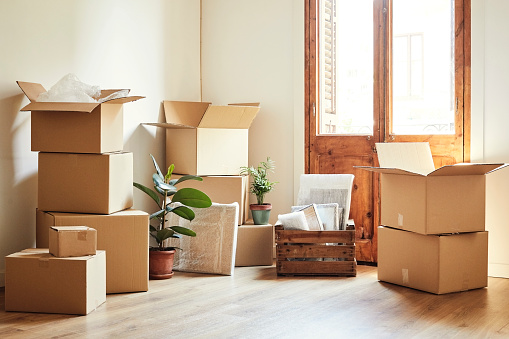As a Realtor, one of the most educational moments I ever experienced was when I sold my own home and moved with my family to Lake Oswego. We’d had our kids and lived in our prior home for 13 years. I was pretty clueless about how much more complicated our household and possessions had become. I put off packing until about a week before our move. It was a disaster! I was so pressed to get it done on time that I was literally just throwing stuff in boxes! Live and learn, right?

Here are some moving and packing tips that I hope you’ll find helpful:
Moving
- Start Early. See my comment above. Weeks, if not months, before your move start planning. It will be so much stressful. It will also help prepare your house for marketing.
- Get rid of stuff. As we live in our homes, we accumulate stuff. So much of it is neither wanted nor needed. Do you really want to take it with you? Do you want to spend money moving and packing this “stuff”? Get rid of it.
- Create a folder. This folder should contain addresses, moving or rental contracts, insurance information, perhaps an itemized list of what you are moving, anything you anticipate in the way of paperwork. Consider creating a hard-copy file. This will be vital if you loose battery charge on laptops or phones
- Book early. This helps in two ways: getting the best rates and being assured of availability. Especially in the spring and summer, the moving companies book at least several weeks in advance.
- Plan for utilities. This includes both shut off at your old place and start up in your new place. You do not want to be moving into the new house and not have electricity.
- Keep essentials with you. A day or two prior to moving pack your luggage: change of clothes, toiletries, etc. Just like when packing for a vacation. In addition, I recommend packing a box of cooking basics like a few plates, cups, bowls, utensils, These would be for an unexpected delay in the delivery of your household goods. Remember to plan for pets and medications.
Packing
- Invest in equipment. You’ll need boxes, packing tape, markers, paper towels, garbage bags. If you are moving yourself you’ll need a furniture dolly, furniture pads, tie-down strips and a truck loading ramp
- Use the right size boxes. The basic idea is the boxes need to be a weight that can be lifted without straining yourself. Heavy stuff in small boxes (books, etc.), light stuff in big boxes (linens, etc.).
- Heavy stuff on the bottom of the box. This will keep the heavy stuff from crushing the light stuff. It will also balance the weight of the box as boxes are stacked.
- Don’t leave empty space in the boxes. This will maximize the use of the packing materials, but empty spaces can allow the box to be crushed in transport.
- Avoid mixing items from different rooms. When unpacking it will take twice as long if you are running from room to room.
- Label each box with what room it is for and a list of the contents
- Tape the boxes well. You want a couple of strips across the seams at the bottom and the top, but then do two wraps completely around the box in two places around the top to the bottom and back up to the top again: all the way around.
- Take care of your art. You can purchase special boxes and crates for art. Don’t wrap oil paintings in packing paper; it may stick to the paint. Wrap art in bubble wrap. You can also wrap it in bubble wrap, box it, and then place in a second box padded by packing paper.
- Kitchen dishes. You can purchase special boxes and packaging for dishes and glasses. They make it all so much easier! If you do end up wrapping with boxes and backing paper try wrapping each piece and then bundling in groups of 4 to 5 pieces and wrapping those together as a bundle with packing paper. Consider packing plates on their sides rather than stacking. Get the boxes with cardboard dividers for glasses. The world of packing materials is pretty broad. Yes, it costs money, but think about the cost of replacing these items. Not to mention, as it is for me, the sadness it would bring to loose special pieces.
I want to give credit to realsimple.com where I got a good bit of guidance for this article.
As always, thank you for reading the blotter,
Dianne
